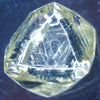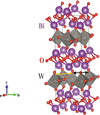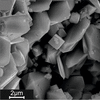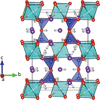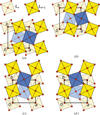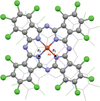issue contents
August 2021 issue

Cover illustration: Some examples of crystal forms: (top row, left-to-right): bio-crystalline calcite of coral reef (Andrzej Katrusiak), fur-like crystals of a high-nitrogen-content organic compound (Anna Olejniczak), a high-pressure chamber with a single crystal and a ruby sphere (Boris Zakharov); (middle row): a high-pressure reaction of Fe-formate perovskite black crystals to a new green form (Szymon Sobczak), a diamond crystal (A. Katrusiak), dendrites of a high-nitrogen-content organic compound (A. Olejniczak); (bottom row) three morphologies of pyrite (A. Katrusiak), microcrystalline NaLuF4 and a gold nanotriangle (Marcin Runowski). Images selected to introduce a new category of crystal growth papers in Acta Crystallographica Section B (see editorial by Blake et al., pp. 456–457).
editorial

quantum crystallography
 access
access

high-pressure crystallography
research papers


 access
access



 access
access access
access







 access
access

 access
access



 access
access

 access
access



 access
access

 journal menu
journal menu








